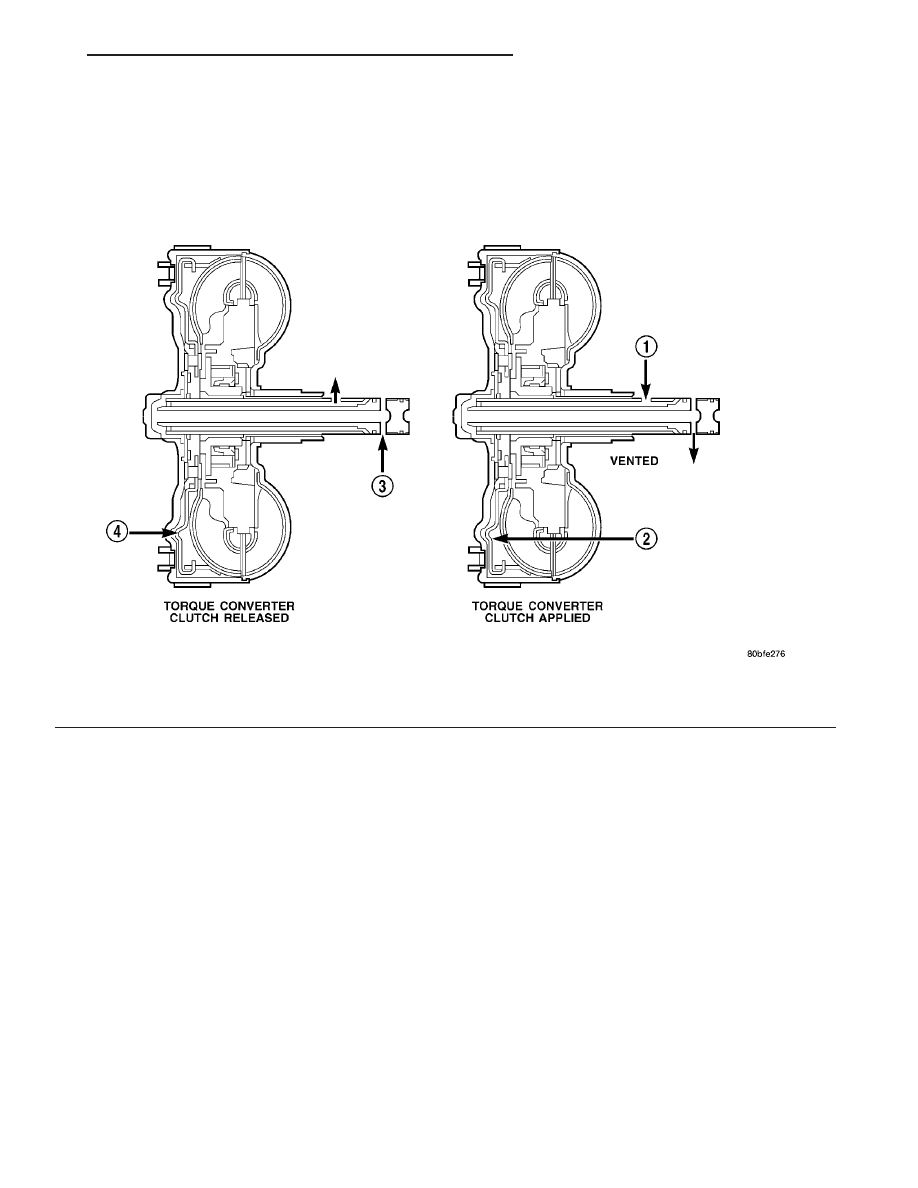Chrysler Sebring, Stratus sedan, Sebring Convertible. Manual - part 604

OPERATION
The converter impeller (Fig. 322) (driving member),
which is integral to the converter housing and bolted
to the engine drive plate, rotates at engine speed.
The converter turbine (driven member), which reacts
from fluid pressure generated by the impeller, rotates
and turns the transmission input shaft.
Fig. 322 Torque Converter Fluid Operation
1 - APPLY PRESSURE
3 - RELEASE PRESSURE
2 - THE PISTON MOVES SLIGHTLY FORWARD
4 - THE PISTON MOVES SLIGHTLY REARWARD
JR
40TE AUTOMATIC TRANSAXLE
21 - 177
TORQUE CONVERTER (Continued)